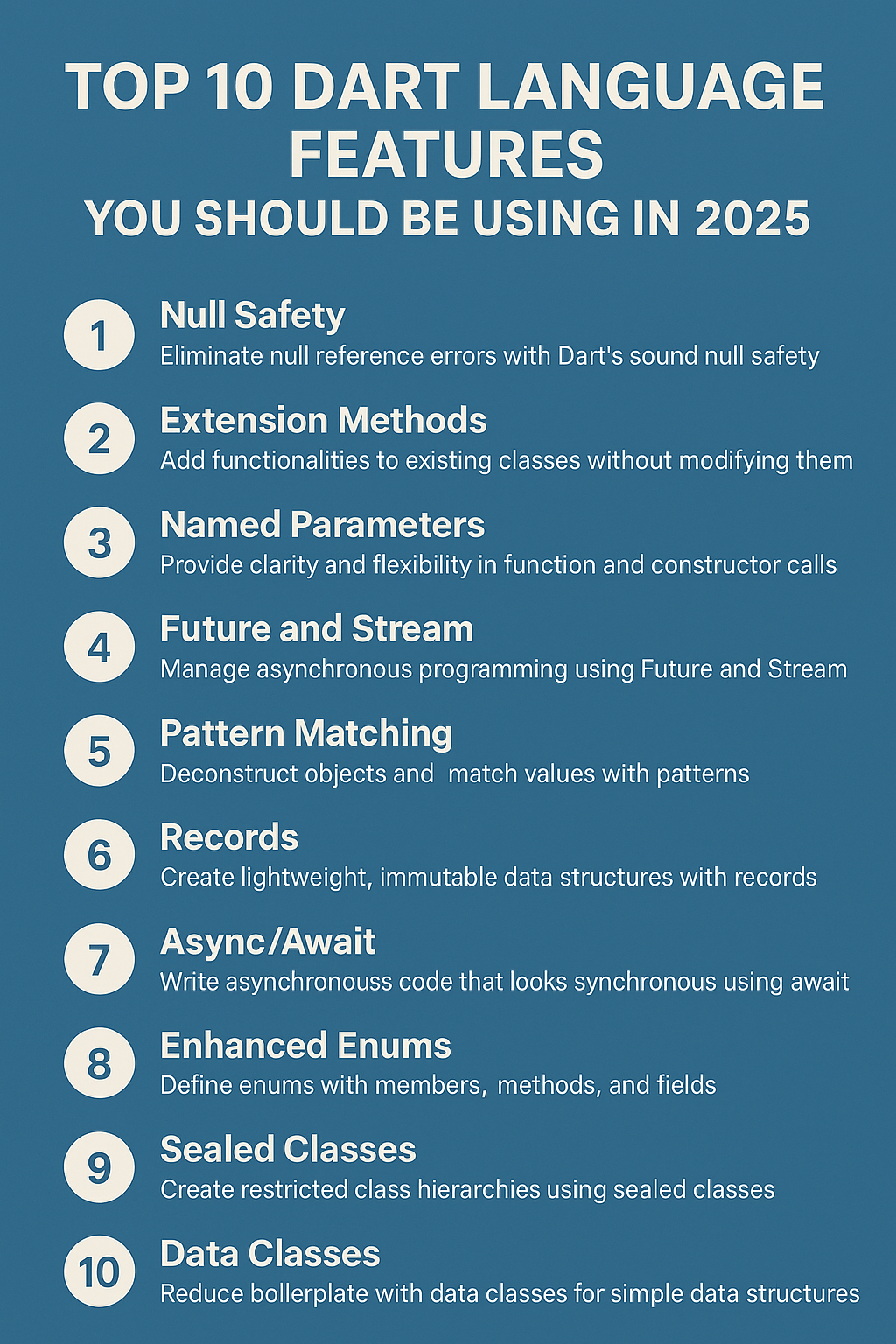
Dart has grown into a mature, powerful language—especially for Flutter developers. With each new version, Dart continues to offer modern features that enhance developer productivity, safety, and performance. Among the Dart language features of 2025, whether you’re new to Dart or a seasoned pro, here are the top 10 Dart features you should absolutely be using in 2025.
1. Records
Dart’s Record type lets you group values without needing a class.
(String, int) userInfo = ('Alice', 30);
print(userInfo.$1); // Alice
print(userInfo.$2); // 30
Use it when returning multiple values from a function without boilerplate.
2. Pattern Matching
Pattern matching makes your code more expressive and concise.
switch (user) {
case ('admin', true): print('Welcome admin!');
case (_, false): print('Access denied');
}
Great for destructuring, conditionals, and clean switch expressions.
3. Sealed Classes
Use sealed classes to enforce exhaustive checks in your switch statements.
sealed class AuthState {}
class LoggedIn extends AuthState {}
class LoggedOut extends AuthState {}
This is especially powerful for managing state in Flutter apps.
4. Enhanced Enums
Enums now support methods, fields, and interfaces.
enum Status {
success,
failure;
bool get isSuccess => this == Status.success;
}
This lets you write more robust and encapsulated enums.
5. Named Arguments with Default Values
This classic Dart feature continues to be underrated. Define defaults to make APIs clearer:
void greet({String name = 'Guest'}) {
print('Hello, $name!');
}
6. Late Variables
Use late for lazy initialization when null safety gets in the way.
late final config = loadConfig();
Helpful for things like dependency injection and expensive computations.
7. Extension Methods
Extend types without inheritance or modification.
extension StringUtils on String {
String capitalize() => '${this[0].toUpperCase()}${substring(1)}';
}
Perfect for keeping utility logic clean and reusable.
8. Async-Await & Future.wait
Dart’s async model is intuitive. Combine tasks with:
await Future.wait([
fetchData(),
fetchSettings(),
]);
Efficiently wait for multiple operations to complete in parallel.
9. Const Constructors & const Contexts
Use const wherever possible for performance and memory optimization.
const button = Text('Click me');
In Flutter, this dramatically reduces widget rebuilds.
10. Null Safety
Since Dart 2.12, null safety is a game-changer for avoiding bugs.
String? name;
print(name?.length); // Safe
Combined with required, late, and type promotion, it keeps your code predictable.
Final Thoughts
If you’re building Flutter apps or backend services with Dart in 2025, these language features can save you time, prevent bugs, and make your codebase more modern and maintainable. Start adopting them today!



